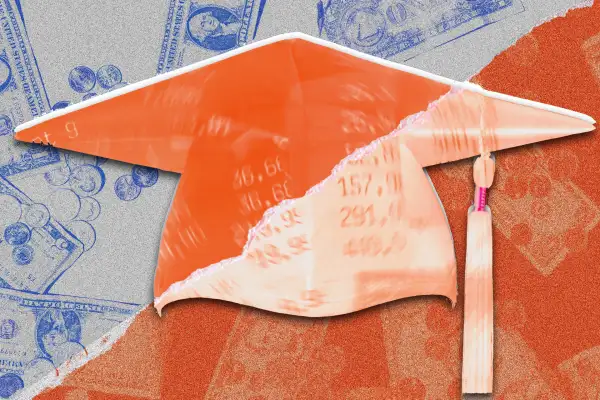Here's How Much Student Loan Borrowers Plan to Cut Back as Loan Bills Resume

As student loan borrowers reconfigure their budgets to fit in loan bills after a three-and-a-half-year pause, new research shows they expect to spend an average of $56 less per month after the October resumption of payments.
That stat, which comes from the Federal Reserve Bank of New York, suggests that many borrowers don’t plan to reduce their spending by the same amount as their bills, which a separate report estimated would run between $210 and $314 a month for the typical borrower.
Some borrowers likely plan to draw from their savings (or reduce how much they’re socking away) to maintain current lifestyles, according to the New York Fed report.
It's important to note that borrowers' estimates of their spending going forward from October don't fully capture the impact of the restart because some people appear to have made necessary budget adjustments during the summer in anticipation of the payment restart.
Still, the research provides fresh evidence to suggest that restarting student loan payments will not significantly hurt the U.S. economy.
The Biden administration has taken several steps to help borrowers that will blunt economic disruption from the restart, according to the report. The administration canceled debt for millions of borrowers through targeted programs and rolled out two key initiatives to help Americans with bills coming due.
A new income-driven repayment plan called SAVE is more generous than previous options (meaning smaller payments) and it allows single borrowers who earn $32,800 or less to make $0 payments. And the creation of a one-year “on-ramp” period will keep missed student loan payments from hurting people’s credit scores.
“While these factors will make the resumption of payments more smooth than otherwise, and lessen the expected decline in consumption growth, some student loan borrowers will surely struggle managing their debt obligations just as before the pandemic forbearance. Nevertheless, we expect the potential spillover to the broader economy to be limited,” the New York Fed researchers wrote.
For borrowers with no wiggle room in their budgets, the restart is especially challenging, and many borrowers say they are worried about missing payments. On average, borrowers reported a 23% chance they'll miss a student debt payment between now and the end of the year, according to the survey.
On the other hand, borrowers who are in a better position may have made substantial payments on their loans ahead of the end of the forbearance period, according to the report.
Between the time of the Supreme Court decision striking down loan forgiveness and the date when interest started accruing again (Sept. 1), there appears to have been a spike in loan payments, according to the report, which cites deposits at the U.S. Treasury by the Department of Education, most of which represent federal student loan payments.
The New York Fed report is based on an August survey of 1,000 respondents, 151 of whom said they had federal student loans and were entering repayment in October.
More from Money:
7 Best Student Loan Refinance Companies of October 2023
What Actually Happens if You Don't Pay Your Student Loan Bills?
Student Loan Payments Are Back. Here's What Borrowers Need to Know

